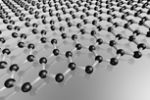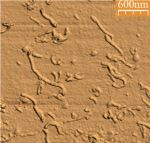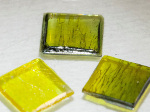News
EPJ E Highlight - Stability lost as supernovae explode
- Details
- Published on 29 April 2014

A new model accounting for the loss of stability occurring at the very start of supernova explosions sheds some new light on this phenomenon, opening up potential broader applications
Exploding supernovae are a phenomenon that is still not fully understood. The trouble is that the state of nuclear matter in stars cannot be reproduced on Earth. In a recent paper published in EPJ E, Yves Pomeau from the University of Arizona, USA, and his French colleagues from the CNRS provide a new model of supernovae represented as dynamical systems subject to a loss of stability, just before they explode. Because similar stability losses also occur in dynamical systems in nature, this model could be used to predict natural catastrophes before they happen. Previous studies of the creeping of soft solids, earthquakes, and sleep-wake transitions have already confirmed the validity of this approach.
EPJ A Highlight – COMPASS: Radiative widths of the a2(1320) and π2(1670) mesons
- Details
- Published on 29 April 2014

Radiative transitions are among the most important and insightful processes for the investigation of atomic, nuclear and hadronic systems. They reveal the electromagnetic substructure of the involved particles. The a2(1320) meson is known since the 1980s to decay radiatively with a branching of about 0.3% into a pion and a photon. Theoretically this can be linked, for example through the vector meson dominance model, to the main hadronic decay channels.
EPJ B Highlight - Nanoscale heat flow predictions
- Details
- Published on 22 April 2014

A new study predicts that heat flow in novel nanomaterials could contribute to creating environmentally friendly and cost-effective nanometric-scale energy devices
Physicists are now designing novel materials with physical properties tailored to meet specific energy consumption needs. Before these so-called materials-by-design can be applied, it is essential to understand their characteristics, such as heat flow. Now, a team of Italian physicists has developed a predictive theoretical model for heat flux in these materials, using atom-scale calculations. These findings, published in EPJ B by Claudio Melis and colleagues from the University of Cagliary, Italy, could have implications for optimising the thermal budget of nanoelectronic devices—which means they could help dissipate the total amount of thermal energy generated by electron currents—or in the production of energy through thermoelectric effects in novel nanomaterials.
EPJ B Highlight - Grasp of SQUIDs dynamics facilitates eavesdropping
- Details
- Published on 08 April 2014

Latest theoretical advances pertaining to the dynamics of highly sensitive magnetometers could find military applications in low-noise amplifiers and sensitive antennas
Theoretical physicists are currently exploring the dynamics of a very unusual kind of device called a SQUID. This Superconducting Quantum Interference Device is a highly sensitive magnetometer used to measure extremely subtle magnetic fields. It is made of two thin regions of insulating material that separate two superconductors – referred to as Josephson junctions – placed in parallel into a ring of superconducting material. In a study published in EPJ B, US scientists have focused on finding an analytical approximation to the theoretical equations that govern the dynamics of an array of SQUIDs. This work was performed by Susan Berggren from the US Navy research lab, SPAWAR Systems Center Pacific, in San Diego, CA, USA and Antonio Palacios San Diego State University. Its applications are mainly in the military sector, including SQUID array-based low-noise amplifiers and antennas.
EPJ E - Andreas Bausch, the new biological physics EiC
- Details
- Published on 07 April 2014

This month EPJE welcomes Andreas Bausch, who takes over from Frank Jülicher, as Editor in Chief for biological physics in EPJ E – Soft Matter and Biological Physics. In his lab, Bausch applies new experimental tools of soft condensed matter physics to living cells and bio-mimetic model systems. This is his vision for biological physics within EPJE in the years to come:
EPJ B Highlight - Graphene nanoribbons as electronic switches
- Details
- Published on 31 March 2014

A new theoretical study shows the conductivity conditions under which graphene nanoribbons can become switches in externally controlled electronic devices
One of graphene’s most sought after properties is its high conductivity. Argentinian and Brazilian physicists have now successfully calculated the conditions of the transport, or conductance mechanisms, in graphene nanoribbons. The results, recently published in a paper in EPJ B, yield a clearer theoretical understanding of conductivity in graphene samples of finite size, which have applications in externally controlled electronic devices.
EPJ E Highlight - Making the most of carbon nanotube-liquid crystal combos
- Details
- Published on 26 March 2014

A better understanding of the physical response of combination materials made of nanotubes with ferroelectric liquid crystals could soon open the door to applications as sensors or switches
Dispersions of carbon nanotubes with liquid crystals have attracted much interest because they pave the way for creating new materials with added functionalities. Now, a study published in EPJ E by Marina Yakemseva and colleagues at the Nanomaterials Research Institute in Ivanovo, Russia, focuses on the influence of temperature and nanotube concentration on the physical properties of such combined materials. These findings could have implications for optimising these combinations for non-display applications, such as sensors or externally stimulated switches, and novel materials that are responsive to electric, magnetic, mechanical or even optical fields.
EPJ E Topical Review: Foaming experiments on the ISS
- Details
- Published on 24 March 2014

Foams and foaming processes pose interesting questions for both fundamental research and practical applications. Although foams are a familiar thing, both in our everyday lives and in industry, many aspects of foam physics and chemistry still remain unclear.
This EPJ E paper comprehensively reviews the studies of foams under microgravity, including studies conducted in parabolic flights, in sounding rockets and in the International Space Station.
EPJ D Highlight - Plasma tool for destroying cancer cells
- Details
- Published on 11 March 2014

Inducing biological tissue damage with an atmospheric pressure plasma source could open the door to many applications in medicine
Plasma medicine is a new and rapidly developing area of medical technology. Specifically, understanding the interaction of so-called atmospheric pressure plasma jets with biological tissues could help use them in medical practice. Under the supervision of Sylwia Ptasinska from the University of Notre Dame, in Indiana, USA, Xu Han and colleagues conducted a quantitative and qualitative study of the different types of DNA damage induced by atmospheric pressure plasma exposure, in a paper published in EPJ D as part of a special issue on nanoscale insights into Ion Beam Cancer Therapy. This approach, they hope, could ultimately lead to devising alternative tools for cancer therapy as well as applications in hospital hygiene, dental care, skin diseases, antifungal care, chronic wounds and cosmetics treatments.
EPJB Colloquium – From SiC to fluorescent SiC based white LEDs
- Details
- Published on 11 March 2014

A new EPJ B Colloquium reviews the latest advances in silicon carbide (SiC) for optoelectronics. The wide bandgap of SiC makes it a great semiconductor material to make devices for in high power, high frequency and high temperature applications.
During the past decade, SiC has also become a promising materials for light-emitting diodes (LED), since it was found that co-doping it with nitrogen and boron produces a high donor-acceptor pair emission efficiency. Fluorescent SiC based white LED light source is an innovative concept for optoelectronic devices.




